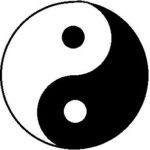 Researchers at Ho Miu Ling Nethersole Hospital, in Hong Kong, China, studied patients with end-stage kidney disease — complete, or almost complete failure of the kidneys to function.
Researchers at Ho Miu Ling Nethersole Hospital, in Hong Kong, China, studied patients with end-stage kidney disease — complete, or almost complete failure of the kidneys to function.
The hardest part is maintaining commitment.
First, the details.
- 72 participants were advised to exercise following the 30-minute demonstration on a videotape of low-capacity aerobic exercise based on tai chi.
- Encouragement was given over the telephone.
- Self-reports on practice were recorded in a logbook.
- The effect of the program was evaluated 3 months after the program.
- Outcomes assessment included functional mobility (timed “Up & Go” test), muscle flexibility (“Sit & Reach” test), physical capacity (“Six-Minute Walk”), and quality of life [Kidney Disease Quality of Life Short Form (KDQOL-SF)].
And, the results.
- Over time, 39 participants (54%) dropped out.
- Significant improvements were observed in the timed “Up & Go” and “Sit & Reach” tests.
- There were also significant improvements in the “Six-Minute Walk” and in KDQOL-SF scores for emotional well-being.
- Changes in the burden of kidney disease and general health were insignificant.
The bottom line?
The authors concluded, “Physically, patients with end-stage renal disease benefit from home-based low-capacity aerobic exercise. A home-based program provides an alternative to outdoor and group exercise.”
But the high rate of drop outs (more than half) suggests it’s a hard sell.
3/5/11 19:30 JR